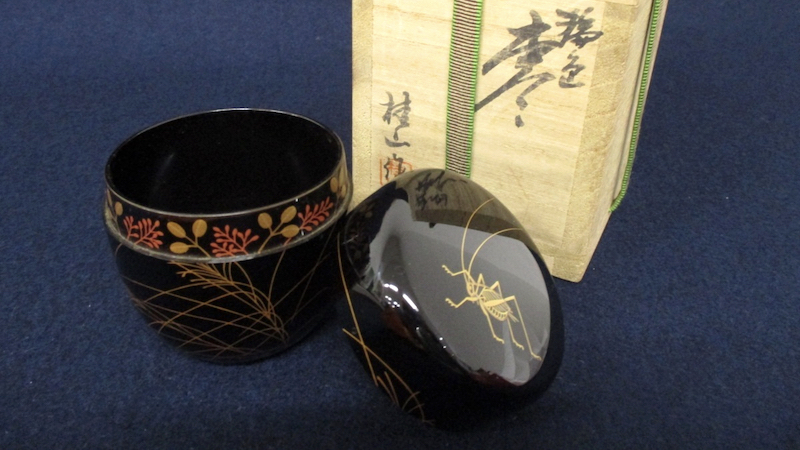
Usuchaki, also called usuki, is a general term for containers used for usucha.
The materials used for usuchaware include wood, lacquerware, ivory, bamboo, ikkanbari, and baskets.
The shape of thin tea utensils can be broadly divided into 'Nakatsugi type' and 'Natsume type'. ``Shinnakatsugi,'' with a chamfered shoulder on the lid of the ``Mennakatsugi,'' and ``Chaoke,'' with a shallower lid next to the ``Chaoke.'' ``Fubuki'' with a chamfered hem of the barrel, ``Natsume'' with rounded edges and a ``Hiranatsume'' with a flattened jug. There are six basic shapes.
The general theory is that thin tea utensils were originally karamono tea containers called “hikiya” (a wooden container that was ground on a potter's wheel in the shape of the tea container to be put inside and coated with lacquer). It is said that after making strong tea, light tea was made in a hikiya, which is a vessel that holds the tea container.
Later, it became independent as a thin tea utensil, and it came to be called ``lacquered tea container''. assumed to have been produced.
There is also a theory that 'yakuki' and 'medicine baskets', which are originally containers for medicine, were likened to tea utensils.
Separately, there is a tea set called 'Kinrinji' which is said to have been made by Emperor Godaigo. You can see the characters ``Togashiri'', ``Tsutsugiri'' and ``Suzukiri'' representing ``Sunkiri tea utensils'', which are almost the same type as ``Kinrinji''.